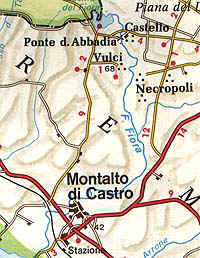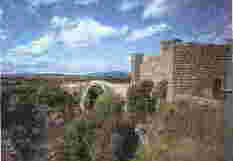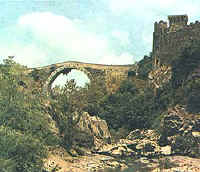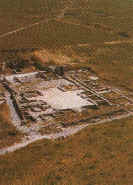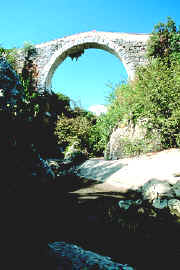|
|
VULCI (Montalto di Castro)
The
origin of Vulci goes back to the late Iron Age (8th century BC).
Conquered by the Romans in the 3rd century BC, Vulci was definitely
abandoned after the end of the Roman
Empire (5th century AD). It was one of the
largest Etruscan towns in southern Etruria.
Situated
on a wide plateau called Pian de Voci, the town covered some 300 acres of land.
Vulci’s prosperity was mainly due to its geographical position. In fact, the
city was located in the river Fiora valley, about ten miles from the sea. Vulci
soon became one of the most powerful cities in Etruria;
between the 7th and the 6th centuries BC, the centre
reached the height of its power. Many bronzes, gold objects and thousands of
Greek vases were found in the necropolises near the city. It is said that Prince
Lucien Bonaparte, Napoleon’s brother, unearthed more than 2,000 Attic vases
from 5 acres of land in the 19th century. Vulci’s territory
stretched for many miles to Cosa and Mount Argentario
in the north, and to lake Bolsena in the east. About 15,000 people lived in the town at that time. After a
period of crisis (5th century BC) following the defeat of the
Etruscan fleet near Cuma (474 BC), Vulci’s ancient glory revived in the
Hellenic age (late 4th century BC), as some rich family tombs found
at the Necropolis of Ponte Rotto show. Among them, the François
Tomb (4th century BC) deserves a special mention. This family
tomb contained some frescoes representing episodes of the Trojan cycle, old
Etruscan legends and the heroic deeds of Mastarna, a local hero. Now the
paintings are kept at Villa Albani (Torlonia collection), Rome. Nowadays, the most
interesting sights are located in the area of the ancient town (Parco
Archeologico di Vulci). There you can see the remains of an Etruscan
wall, the foundations of a big temple dated from the 4th century BC
and the old forum with the ruins of some Roman public buildings (2nd
century BC). Anyway, the remains of a Roman villa (Villa of Criptoportico)
are especially noteworthy. Situated in the main street (decumanus maximus), the
Villa was built around the 2nd century BC. It had several rooms, a
Roman bath, an atrium, some warehouses and a criptoportico (subterranean passage).
Near the entrance to the criptoportico there is also a mithraeum (a place where
the Persian god Mithras was worshipped). The Villa was used until the fall of
the Roman Empire. If
you love trekking, there is the possibility to make exciting excursions in the
park. In fact, the archaeological site is located in a beautiful area with green
meadows, deep
Testo:A.G.Tur. di Viterbo Fonte
dati e immagini Amm.ne Prov. & APT di Viterbo |
|||||||||||||||||||||||||||||||
